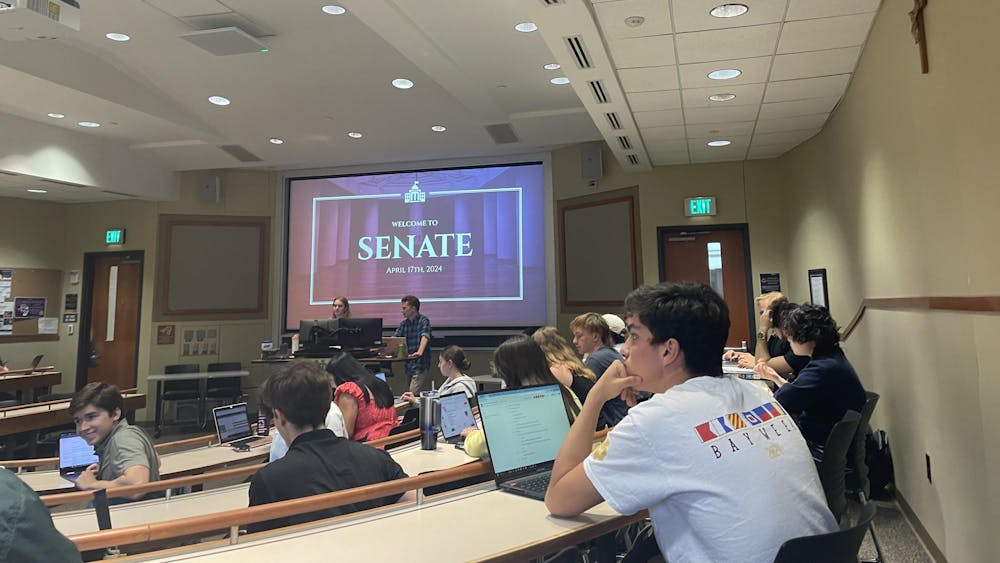Although most people associate Christmas with a manger, shepherds and over-booked inns, astrophysicist Grant J. Matthews from Notre Dame's department of physics enjoys examining the Nativity story from a cosmic perspective.
Matthews gave a lecture titled "What and When Was the Christmas Star?" this past weekend.

"There's actually a wealth of astronomy about the circumstances of how we celebrate Christmas," Matthews said.
The lecture utilized Jordan Hall's state of the art Digital Visualization Theater to explore potential explanations of the Christmas star, which is described in the Gospel of Matthew.
"Within our 10 computers here, we have programmed in memory every star, every object in the sky known to humankind. We can calculate their trajectory and where they've been, so we can go forward and back in time," Matthews said. "Using this, we can go back to the time when that Christmas star first appeared and see how the sky might have appeared to the Magi and might have signaled that there was a newborn ruler in Judea."
Matthews said the Magi were early astrologers who searched for meaning in the carefully followed movements of celestial objects.
"[The Magi] believed that each sign of the zodiac referred to a different time of the year and a different geographic location of the world," he said.
The night sky the Magi studied 2,000 years ago is distinctly different from the one we know today, Matthews said.
"The location of the vernal equinox changes with time," he said. "The vernal equinox was just departing the constellation of Aries, which actually fixed a lot of the lore of the time."

Aries, the first sign of the zodiac, is symbolized by a lamb and was considered by the Magi to signify Judea.
"Something that would have been seen as important at the time would be represented by something occurring in the constellation Aries," he said.
Though scientists are unsure about what exactly this phenomenon was, Matthews said the four most likely theories suggest it was a comet, nova, supernova, or conjunction of planets.
Using records of the Chinese Court, researchers discovered a few comets and supernovae that occurred near the time of Jesus's birth, Mathews said. However, Matthews does not think that the Magi would interpret these occurrences as joyous indications of a great leader being born.
"[Comets, novae, and supernovae] were seen as harbingers of a great disaster. For example, each comet is associated with some catastrophic event: the death of Cleopatra, the death of Caesar, these were not harbingers of joy, they were warnings of disaster" Matthews said. Rather, Matthews said he believes the most likely explanation for what the Magi saw in the sky lies within our own solar system.
"[The Magi] would be very concerned with the location of the planets. What they would look for would be where planets line up. Around 6 BC, the sun, Jupiter, and the moon are all in Aries and Venus and Saturn are right next door," he said.
This grouping of planets would have been interpreted eagerly by the Magi. Matthews said different objects in the solar system were thought to represent different symbolic meanings.
"Jupiter is the symbol of a powerful leader. The moon means that the leader had a special appointed destiny in their death. Saturn indicated a giving of life. A powerful leader, a newborn king, born in the land of Judea in our time frame of interest."
Matthews said he believes this grouping closely matches the one reported in the original nativity story, sayingd the "Christmas star" most likely refers to this unusual grouping of celestial bodies.
Contact Grace McCormack at gmccorma@nd.edu.












